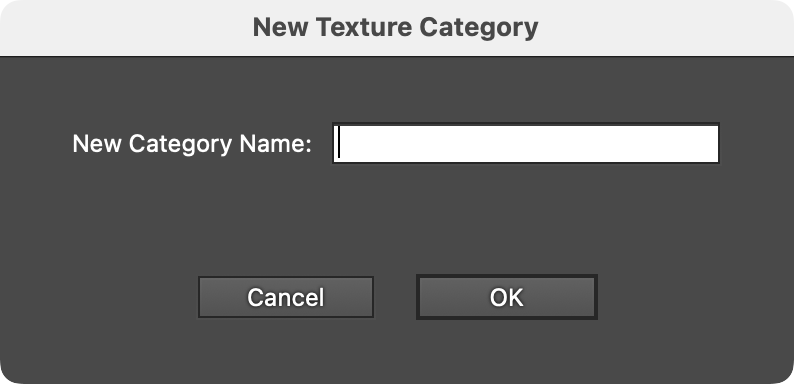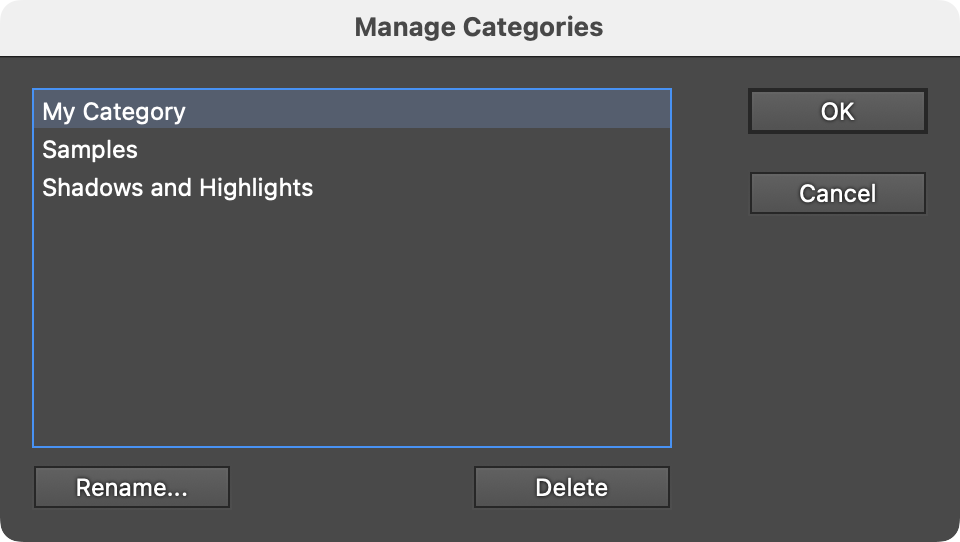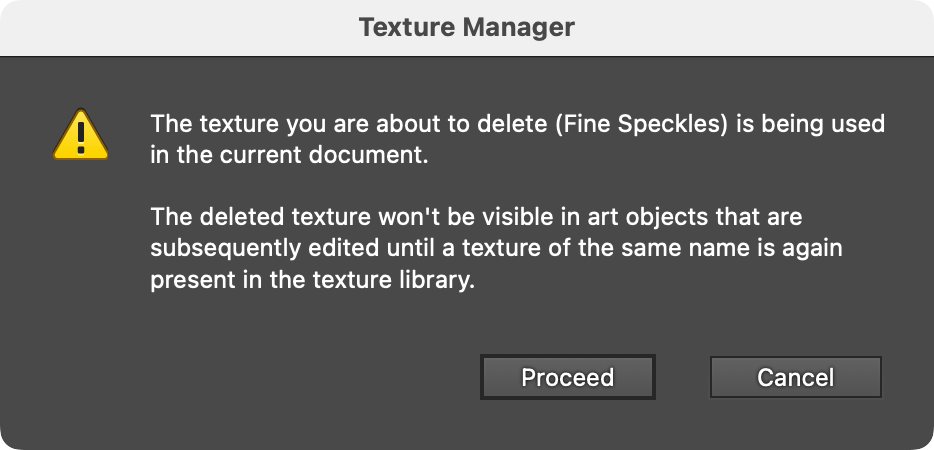 Texture Manager
Texture Manager
The large Texture Manager dialog is the central place where the library of textures can be organized. It can be reached through the panel flyout menu (see Texture Panel: Flyout Menu) or by Option/Alt-clicking on the Import Textures button on the panel.

Texture Manager Dialog
1. Column Headings
By default, the textures are sorted alphabetically by name, but clicking on any of the column headings will use that heading for sorting (either upwards or downwards; the state can be toggled by clicking again on the heading). The sorting order will be retained across sessions. Columns, which are not resizeable, include:
a. Name: The name of the texture.
b. Category: The category (if any) assigned to the texture.
c. Repeating: The repeating status of the texture (a bullet symbol indicates the texture is repeating). Textures downloaded from Astute Graphics’ Texture Packs will have the repeating flag already set; textures from other sources may need to have the flag manually set (see below).
d. Initial Blend: The initial blend mode of the texture when it is newly assigned to artwork or is reset. By default, the initial blend mode is Multiply.
e. Mode: The color mode of the texture (color or grayscale).
f. Size: The width and height of the texture, in pixels.
g. Favorite: The favorite status of the texture (a bullet symbol indicates a favorite).
2. Texture List
If the number of textures is greater than will fit in the list, a scroll bar will appear on the righthand side. Textures may be selected by clicking on them; multiple textures may be selected by Command/Ctrl-clicking on them, or Shift-clicking to select contiguous textures. The “Noise” texture does not appear in the list because is a built-in, automatically-generated texture that cannot be changed or deleted.
3. Texture Preview Area
Previews the textures that are selected in the list, similarly to the preview area on the panel except that multiple textures will be previewed when selected (up to a maximum of 24, although the preview size will get smaller for values above 2), and using the Preview Size Icon will affect all of the previewed textures collectively.
4. Rename Button
When a single texture is selected, allows renaming it through a simple dialog.
5. Category Popup Menu
Used to create categories, manage categories, or reassign the category of one or more selected textures.

Texture Manager Category Menu
A. New...
Brings up the New Texture Category dialog, allowing a new category to be created. If a new category is not assigned to any textures when the Texture Manager is exited, it will not be retained.

Texture Manager New Category Dialog
B. Manage...
Brings up the Manage Category dialog, in which categories selected in the list may be renamed or deleted. Since the “Noise” category is built-in and cannot be renamed or deleted, it is not shown in the list.

Texture Manager Manage Categories Dialog
C. [None]
Removes any category from the selected textures.
D. Category List
Assigns the chosen category to the selected texture(s). The contents of this section of the menu will vary, depending on which categories exist.
6. Repeating Checkbox
Turns the repeating flag on or off for the selected texture(s). When the flag is on, textures that do not completely cover the artwork bounds will be tiled so that they do.
7. Initial Blend Popup Menu
Assigns an Initial Blending mode to the selected texture(s).
8. Favorite Checkbox
Turns the favorite status on or off for the selected texture(s).
9. Export Button
Allows the selected texture(s) to be exported (in PNG format) into a folder specified using the standard OS folder picking dialog.
10. Delete Button
Deletes the selected texture(s). Deleting a texture that is currently being used in an open document will cause a warning dialog to be displayed before deletion occurs.

Texture Manager Deleted Texture in Use Dialog
If the Texture Manager is closed using the Cancel button, all of the changes that were made to any of the textures while it was open, including deletion, will be reverted, and all textures will remain as they were before the Texture Manager was opened.
Texturino stores some texture properties (category, repeating flag, initial blending mode) as metadata directly in each texture’s png file, in order that these values are preserved if the textures are exported and imported on another machine. So if any of these values are changed in the Texture Manager, the disk files of those changed textures must be updated. This process happens when Illustrator is quit, and may cause a sizeable delay if there are many changed textures or they are very large. It is essential not to force quit Illustrator before Texturino is done updating the metadata, or the textures will not have retained their new properties on the next launch.
Textures are internally saved to the following location:
